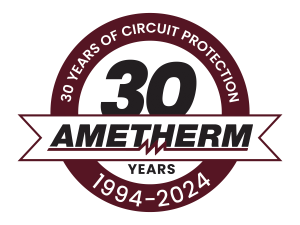Inrush Current Blog Archive
The inrush current blog archive contains articles relating to inrush current, it’s causes, cures, and prevention.
- Circuit Protection with Ametherm’s Mini-Amp
- Dielectric Strength in Electrical Systems
- Energy Efficiency Brings Savings with Inrush Current Limiters
- Ametherm’s Guide To Kinked Leads
- PTC Inrush Current Limiters: Advantages and Disadvantages
- Inrush Current Limiting: PTC, NTC, or Active Circuits
- Why NTC Thermistors In Series Beats Parallel
- PTC Thermistors vs. NTC Thermistors for Inrush Current
- Inverter Pre-Charge Circuit Inrush Current
- How To Limit DC Motor Inrush Current
- The Effectiveness of Inrush Current Limiters for Vacuum Motors Experiencing High Inrush Current
- What is an Inrush Current Limiter? The Single Part Solution
- DC/DC Converter Inrush Current
- Cool-down Time for Inrush Current Limiters
- Inrush Current Limiter Replacement for Pool Chlorinators
- Capacitor Inrush Current
- Ametherm’s Temperature Sensor and Inrush Current Limiter Part Numbers Decoded
- Inrush Current Protection for LED Lighting Retrofits
- High Inrush Current Protection for Industrial Equipment
- Overloaded Circuit Board? Clean House with our New UL Certified SL12 10006
- Limiting Heat Lamp Inrush Current Protects Relay Contacts
- Limit AC Motor Inrush Current
- Calculate Inrush Current in Three Steps
- Alternative Energy Applications for MS35 Inrush Current Limiters
- Toroidal Transformer Inrush Current Issues Got You Down? We’ve Got the Answer
- Design Guidelines for a Power Factor Correction (PFC) Circuit Using a Capacitor and an NTC Thermistor
- Enabling Higher Power Efficiency through Thermistor-based Temperature Compensation
- Transformer Inrush Current: Limiting a 40VA Transformer
Inrush Current Limiting
Circuit Protection with Ametherm’s Mini-Amp
In electronics and electrical engineering, most consumers overlook inrush current. When you power on electronic devices, they can experience a sudden surge in current, often several times higher than their usual levels. This surge can cause various issues, such as reducing equipment lifespan and damaging circuits. In this blog post, we’ll explore Ametherm’s Mini-Amp Inrush Current Limiters as an effective solution for circuit protection. Understanding Inrush Current Before we discuss … Continue Reading

Dielectric Strength in Electrical Systems
Electricity powers our daily lives, and behind the scenes, there’s a crucial factor ensuring the safety and reliability of electrical systems—dielectric strength. In this blog post, we’ll explore the practical importance of dielectric strength, its applications in various domains, and its role in thermistors. Understanding Dielectric Strength: Essential in Electrical Resilience Dielectric strength measures a material’s ability to endure electric stress without breaking down. When an electric field is applied, … Continue Reading

Energy Efficiency Brings Savings with Inrush Current Limiters
In today’s world of technology, there’s a big focus on making electronic devices and systems that have energy efficiency. This goes beyond just talking about it – it’s a crucial part of how we design and make things now. Whether it’s the phone in your pocket, the computer you use, big machines in factories, or systems that create renewable energy, being energy-efficient is a big deal. And a key player … Continue Reading

Ametherm’s Guide To Kinked Leads
Ametherm is a trusted name in the field of inrush current limiting thermistors, providing solutions for a wide range of applications. To help you choose the right inrush thermistor for your specific needs, Ametherm offers three different lead types. These leads are crucial for proper installation and can significantly impact the effectiveness of the thermistor in your circuit. No Kink, Straight Leads: No Dash When you come across an Ametherm … Continue Reading
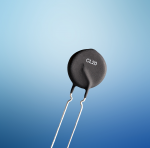
PTC Inrush Current Limiters: Advantages and Disadvantages
PTC’s Are Solutions to Inrush Current Inrush current, also known as startup or surge current, occurs when an electrical device is switched on, and it can exceed the device’s typical operating current significantly. This abrupt surge can strain the components of the circuit and can result in premature failure. Positive Temperature Coefficient devices have emerged as effective solutions for controlling inrush current in various applications. In this article, we will … Continue Reading
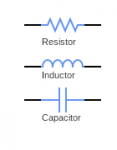
Inrush Current Limiting: PTC, NTC, or Active Circuits
Inrush current limiting is vital to safeguard equipment and enhance its lifespan. NTC and PTC thermistors for inrush current reduction offer benefits like simplicity and cost-effectiveness, but sometimes, an active circuit is a more suitable choice. Comparing NTC, PTC Thermistors, and Active Circuits for Inrush Current Limiting Thermistors are temperature-sensitive resistors that precisely change resistance in proportion to temperature changes. NTC thermistors lower resistance as temperature rises, providing additional series … Continue Reading
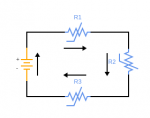
Why NTC Thermistors In Series Beats Parallel
Connecting in Series – Recommended When you connect NTC thermistors in series for inrush current control, you gain several important benefits. Most importantly, the energy is distributed across all the units evenly, which extends the life of both your application and it’s components. Need a Refresher on What a Thermistor is? Click Here. Furthermore, another benefit of connecting NTC Thermistors In Series is that in doing so, it raises their … Continue Reading
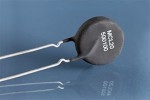
PTC Thermistors vs. NTC Thermistors for Inrush Current
Prevent Inrush Current with PTC and NTC Thermistors PTC and NTC thermistors can provide inrush current protection in various equipment, machinery, and systems. Inrush current affects a wide range of products, from transformers to motors, and electronics from power supplies to inverters. Inrush current becomes further complicated by systems that switch on and off quickly, such as welding equipment and HVAC systems. This post will give you a brief overview of … Continue Reading

Inverter Pre-Charge Circuit Inrush Current
Pre-Charge Circuits Prevent Damage to Inverters Severe damage can occur to inverters when the inrush current is too great for the inverter. Pre-charge circuits protect the inverters by controlling the initial power surge. PTC thermistors can help a pre-charge circuit protect the inverter. Inrush current occurs when the maximum instantaneous input current flows through a system when the electrical power is switched on. In power tools, such as power drives, … Continue Reading
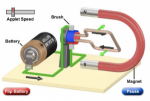
How To Limit DC Motor Inrush Current
Choosing An Inrush Current Limiter To Preserve Your DC Motor So, what does an Inrush Current Limiter have to do with DC motor inrush? More than you may think. DC motor inrush is the maximum, instantaneous input current drawn by the DC motor when first turned on and it is important to know how to limit the inrush current to prevent possible damage to the motor. A DC motor converts … Continue Reading
The Effectiveness of Inrush Current Limiters for Vacuum Motors Experiencing High Inrush Current
Inrush current can cause considerable damage to electrical applications. It is important to control this starting current with the right inrush current limiter. In this article we look at what can happen when you choose the wrong circuit protection device. Then we demonstrate how to choose the right circuit protection device. Finally, we show the dramatic difference between using an inrush resistor and not using one in a vacuum motor. … Continue Reading
What is an Inrush Current Limiter? The Single Part Solution
There is a lot of information available about inrush current limiters and their different applications, capabilities, limitations, and other particular details. But very infrequently is the most basic question asked, what is an inrush current limiter and why is it used? To access, appreciate, and apply the benefits and solutions that these components provide, it is important to first be able to understand, acknowledge, and answer the question of what … Continue Reading

DC/DC Converter Inrush Current
Regulating Inrush Current at Powerup At powerup, DC/DC converters draw a large amount of electrical current. This inrush current can be fatal to both the converter and the load if not controlled at the beginning. To achieve a soft start, when the electrical current rises gradually to its specified level, the use of an NTC Thermistor Inrush Current Limiter can be vital. DC/DC Converters DC/DC converters transform a source of … Continue Reading
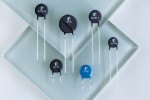
Cool-down Time for Inrush Current Limiters
NTC Thermistor Inrush Current Limiters are used to reduce the inrush current that occurs when an electrical device is switched on. High inrush current is the result of the maximum instantaneous input current drawn by electrical equipment during the initial power up. As technology continues to advance, most systems today run efficiently and maintain a low impedance, which in turn contributes to a high inrush current. Cool-Down Time After Power … Continue Reading

Inrush Current Limiter Replacement for Pool Chlorinators
The sky is blue. The outdoor temperature is rising. The time to get that pool back up and running is now! Whether you run a pool business or are a pool owner, you know how important it is to have your pool chlorinator running smoothly, all season long. But what do you do when your pool chlorinator stops working? Buying a new one might be the first thing that comes … Continue Reading

Capacitor Inrush Current
Reducing Inrush Current to Capacitors Calculating the amount of current flowing to a capacitor, then protecting your load from this initial flow of current is important for any electronic device. The ability to reduce this inrush, caused at powerup, can typically be accomplished by the use of an NTC (negative temperature coefficient) thermistor inrush current limiter. Cause of the Inrush Current Filter capacitors are devices designed to reduce the effect … Continue Reading

Ametherm’s Temperature Sensor and Inrush Current Limiter Part Numbers Decoded
From the creation of the first inrush current limiter series, back in 1994, Ametherm knew that having logic behind the series naming convention would be important. Not only for organizational means but also to easily identify the components of the inrush current limiters and NTC thermistor temperature sensors. Both product lines, the inrush current limiters and NTC thermistor temperature sensors, have stringent guidelines created to get the most accurate description … Continue Reading

Inrush Current Protection for LED Lighting Retrofits
Inrush current protection for LED lighting retrofits can be key to a successful lighting upgrade. Retrofit of LED lighting into an existing electrical system relies on the equipment already in place. This can be problematical due to the high inrush current created by the LED drivers. Falling LED prices and immediate energy savings are propelling the upgrade of older lighting modalities to new LED lighting for commercial and institutional users. For facilities management, benefits of a … Continue Reading

High Inrush Current Protection for Industrial Equipment
Large power users require mitigation of inrush currents as part of overall energy management strategy. Industrial automation with motor drives and logic controllers, high voltage power supplies feeding industrial robotics and solar panel arrays with large capacity power inverters all require inrush current limiting. Overview Inrush current is the momentary surge of current created when power is turned on to motors, transformers, power supplies and heating elements. These current … Continue Reading

Overloaded Circuit Board? Clean House with our New UL Certified SL12 10006
We couldn’t keep it a secret any longer. Finally, a UL approved circuit protection thermistor (Inrush Current Limiter) that’s just 12.3mm in diameter but packs an energy rating of 40 (J), yes; we said 40 (J) plus a maximum continuous current rating of 6.0A. Meet our upgraded UL certified SL12 10006 for limiting inrush current. We think this device is a game changer! Up until now if an application required … Continue Reading

Limiting Heat Lamp Inrush Current Protects Relay Contacts
Limiting Heat Lamp Inrush Current Incandescent heat lamps create a large inrush current when first powered on. Limiting heat lamp inrush current prevents relay damage and extends lamp life. Heat lamps can be used to warm enclosed areas such as livestock pens and chicken coops. Banks of incandescent heat lamps are mounted overhead. As the number of heat lamps increases, limiting heat lamp inrush current becomes more important. Over current can damage relay contacts in … Continue Reading

Limit AC Motor Inrush Current
Limit AC Motor Inrush Current In Air Conditioner Application AC motors used in air conditioning equipment draw large inrush current at power-on. A recent customer of ours had a 115VAC air conditioner installed in their travel trailer for park use. This 15,000-BTU unit required 16 amps for simultaneous compressor and blower motor operation. The trailer was also equipped with a load-shedding power distribution panel to protect its wiring harness from overload. If more … Continue Reading

Calculate Inrush Current in Three Steps
An Inrush Current Limiter (ICL) can protect electrical equipment from overheating when switched on because of inrush current. And, because inrush current equals the maximum instantaneous surge of incoming current from a power source, it can be as much as 2 to 3 times the steady state current of the attached device. Inrush Current Calculators are the best way to measure the resistance versus temperature curve to get the right Inrush Current Limiter. … Continue Reading

Alternative Energy Applications for MS35 Inrush Current Limiters
Application Overview Ametherm’s MS35 series inrush current limiting thermistors play a key role in alternative energy applications by avoiding current spikes in the power generated by wind turbines, solar panels, and other sources as it’s fed into batteries, inverters, and other energy storage components. The MS35 devices are also used to regulate the release of battery energy in electric vehicles and in pre-charge circuits for many different types of battery … Continue Reading
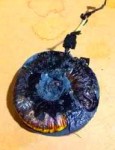
Toroidal Transformer Inrush Current Issues Got You Down? We’ve Got the Answer
What You Need to Know About Toroidal Transformer Inrush Current Toroidal Transformer Inrush Current can cause some serious damage if not appropriately managed. Inrush current can cause circuit breakers to trip and fuses to blow. Additionally, it can cause a complete failure of the transformer itself. And if that weren’t enough to give you a headache, excessive inrush current can also limit the total number of devices which can be … Continue Reading
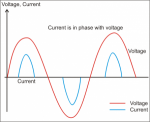
Design Guidelines for a Power Factor Correction (PFC) Circuit Using a Capacitor and an NTC Thermistor
OBJECTIVE Ametherm inrush current limiters are used in many applications today that require suppression of surge current when power is first applied to the system. One of the popular applications of Ametherm inrush current limiters is in power factor correction circuits. This article provides a solution for finding the correct power factor correction (PFC) circuit for an inductive load. This solution is suitable for applications that include ballasts, LED drivers, … Continue Reading

Enabling Higher Power Efficiency through Thermistor-based Temperature Compensation
By Balaji Santhanam, Hubble Power Systems Mehdi Samii, Ametherm Inc. Originally Published in Power System Design Magazine As electronic systems continue to become more compact, temperature plays an increasingly important role in system reliability and power efficiency. Many engineers are already familiar with how temperature can affect reliability; if a system becomes too hot, device operation can become unpredictable. Using a simple temperature sensor like a thermistor, the host processor can monitor … Continue Reading
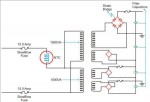
Transformer Inrush Current: Limiting a 40VA Transformer
Have you ever turned on a transformer and heard a loud humming sound? What about having a blown fuse or tripped circuit breaker? These signs can all indicate transformer inrush current. Transformer inrush current describes a spike in current that occurs when you initially turn on your transformer. This spike can be up to 10 times higher than normal current. Why does inrush current occur? It can happen because large transformers demand a huge amount of … Continue Reading

